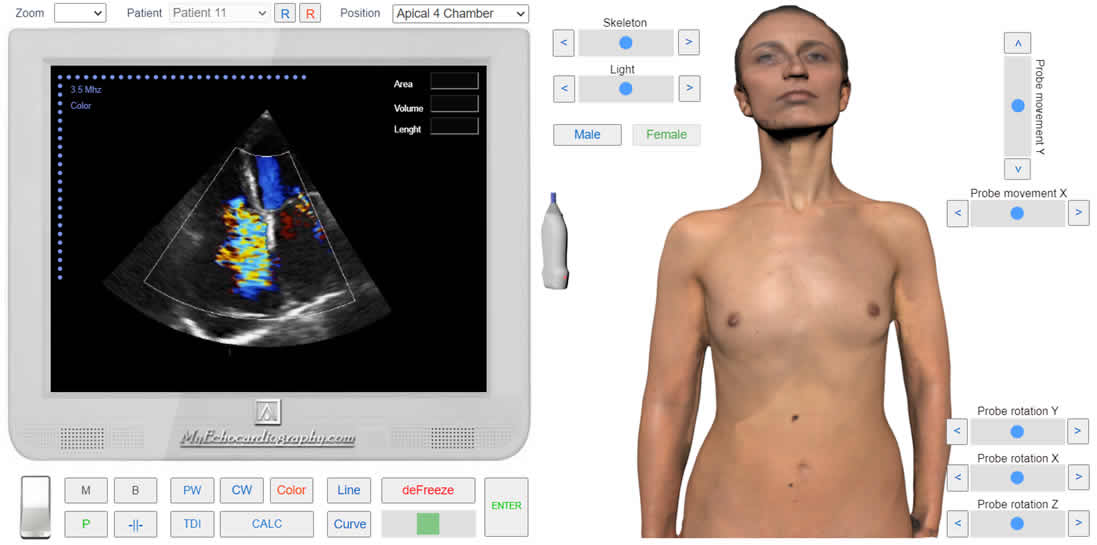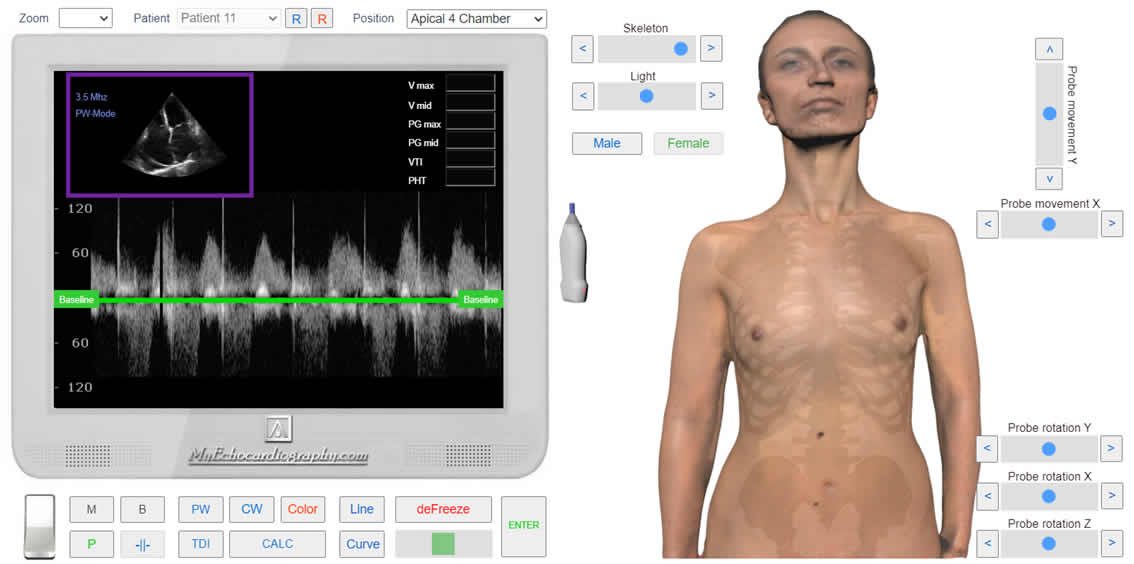Echocardiographic evidence of tricuspid regurgitation
Echocardiography Textbook
One and two dimensional Echocardiography
Tricuspid valve insufficiency often develops secondary to right ventricular decompensation due to pulmonary hypertension. Organic damage to the valve is usually rare (endocarditis, carcinoid syndrome, Ebstein's anomaly, rheumatism). Notably, minor tricuspid regurgitation occurs in 70% of the healthy population.
Color Doppler
Direct and reliable signs can be detected only by Doppler. During color Doppler examination, we can easily see the regurgitation flow. It is coded in blue and directed towards the right atrium during the systole.

Apical Four-chamber view. Color Doppler. Tricuspid regurgitation. Simulation By Echocardiography Online Simulator MyEchocardiography.com
Spectral Doppler (PW, CW)
When examined by PW or CW Doppler, the regurgitation flow is directed opposite to the transducer and is located above the baseline. The flow in the hepatic veins is studied by pulsed wave Doppler, severe tricuspid regurgitation is characterized by systolic flow reversal on the spectrogram.
Spectral Doppler study of tricuspid regurgitation is also used to assess pulmonary artery pressure (systolic pressure).

Apical Four-chamber view. PW Doppler. Tricuspid regurgitation. Simulation By Echocardiography Online Simulator MyEchocardiography.com
Methods of assessment severity of the Tricuspid Regurgitation (ASE):
- Regurgitation area
- PISA
- Hepatic vein flow reversal
- Density of regurgitant jet
DEGREE OF TRICUSPID REGURGITATION BY REGURGITATION AREA (cm2)
- < 5 - mild regurgitation.
- 5 -10 - moderate regurgitation.
- > 10 - severe regurgitation.
DEGREE OF TRICUSPID REGURGITATION BY PISA radius (CM)
- < 0.5 - mild regurgitation.
- 0.5 -0.6 - moderate regurgitation.
- > 0.6 - severe regurgitation.
-
.
DEGREE OF TRICUSPID REGURGITATION BY HEPATIC VEIN FLOW REVERSAL
-
Systolic dominance - mild regurgitation.
-
Systolic blunting - moderate regurgitation.
-
Systolic flow reversal - severe regurgitation.
.
DEGREE OF TRICUSPID REGURGITATION BY DENSITY OF REGURGITATION JET
- Faint/partial/parabolic - mild regurgitation.
- Dense, parabolic or triangular- moderate regurgitation.
- Dense, often triangular - severe regurgitation.
Simulation methods of assessment severity of the Tricuspid Regurgitation:
-
Hepatic vein flow reversal
-
Density of regurgitant jet